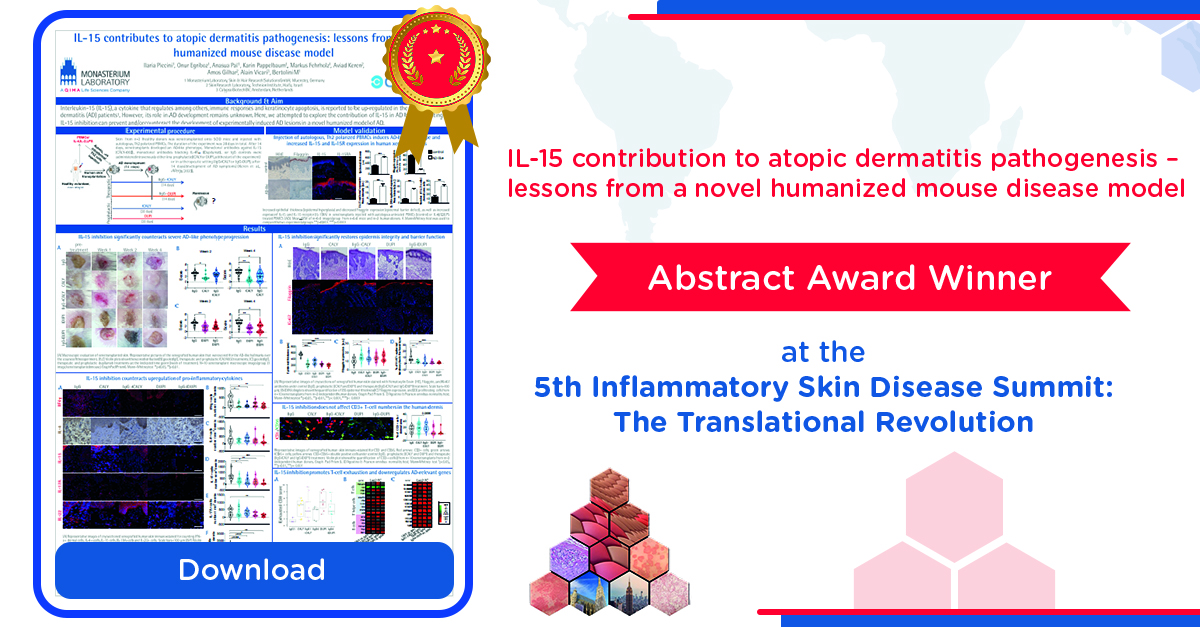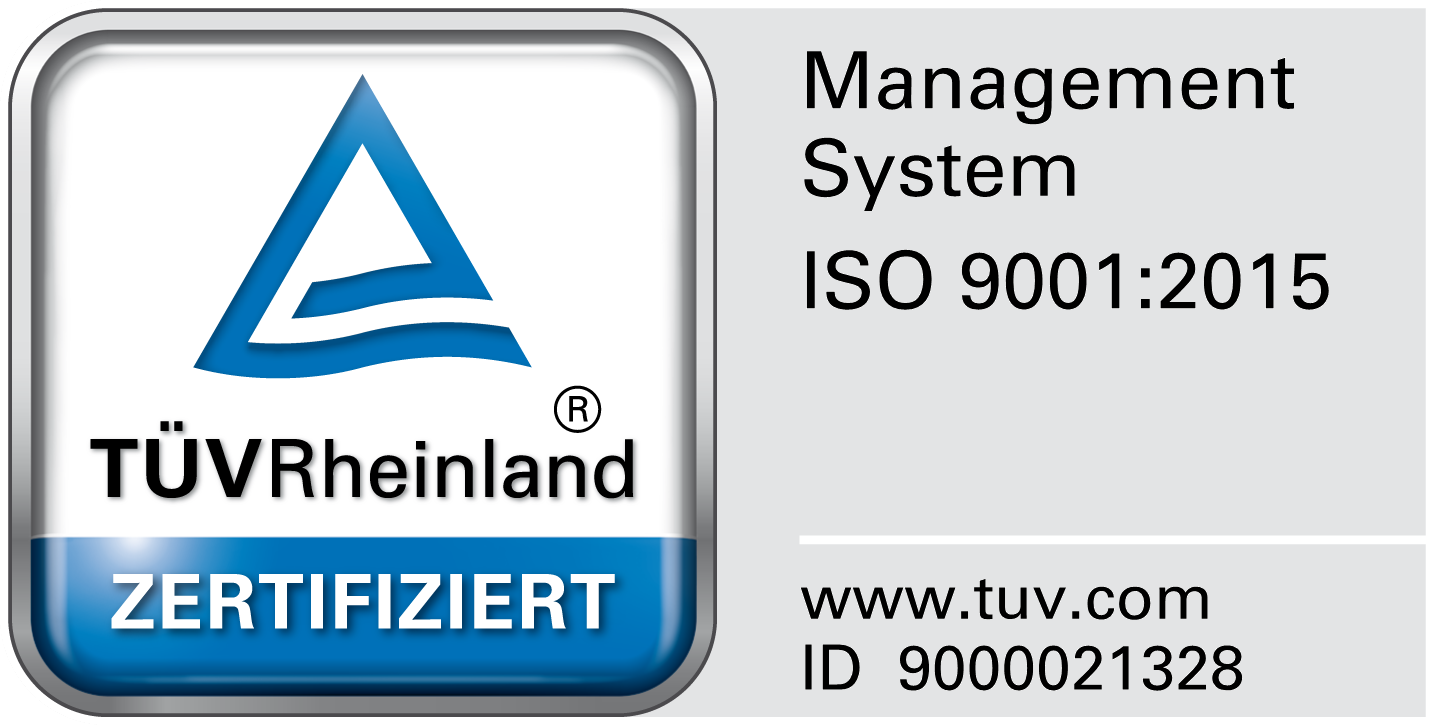We are proud to announce the abstract award by the Inflammatory Skin Disease Summit 2023 (ISDS) for our poster
“IL-15 contributes to atopic dermatitis pathology: Lessons from a novel humanized mouse disease model” – Piccini I, Egriboz O, Keren A, Pal A, Pappelbaum K, Gilhar A, Vicari A, Bertolini M
Atopic dermatitis (AD) is a common inflammatory skin disease characterized by a predominant Th2 immune response with an additional contribution of Th1/Th17/Th22 pathways. Although higher expression of interleukin-15 (IL-15) has been described in AD, the role of this cytokine, which stimulates innate and adaptive immunity, in the pathogenesis of AD remains to be elucidated.
In this collaboration study with Calypso Biotech BV, a novel humanized mouse model of atopic dermatitis – developed by our collaborator Amos Gilhar at the Technion Institute, Israel – was used.
To investigate the role of IL-15 in AD and to compare blockade of this pathway with inhibition of IL-4/IL-13 signaling, mice were treated prophylactically or therapeutically with either an anti-IL-15 monoclonal antibody, the IL-4Rα blocking monoclonal antibody (Dupilumab), or IgG controls.
Experimentally induced AD lesions showed increased epidermal thickness and decreased filaggrin expression accompanied by significantly higher epidermal IL-15 and IL-15RA expression and more IL-15+ and IL-15RA+ cells in the papillary dermis. Treatment with the anti-IL-15 antibody improved clinical signs and reversed skin barrier defects. Unlike Dupilumab, the anti-IL-15 antibody did not affect the number of CD3+ T cells. However, it similarly prevented or reversed the upregulation of IFNɣ+, IL-15+, IL-17+, and IL-22+ cells. Nanostring analysis confirmed that IL-15 inhibition resulted in a favorable modulation of gene expression in AD lesions.
Thus, our data further support the role of IL-15 signaling in AD pathogenesis and suggest that IL-15 may be a potential therapeutic target for the treatment of AD.


